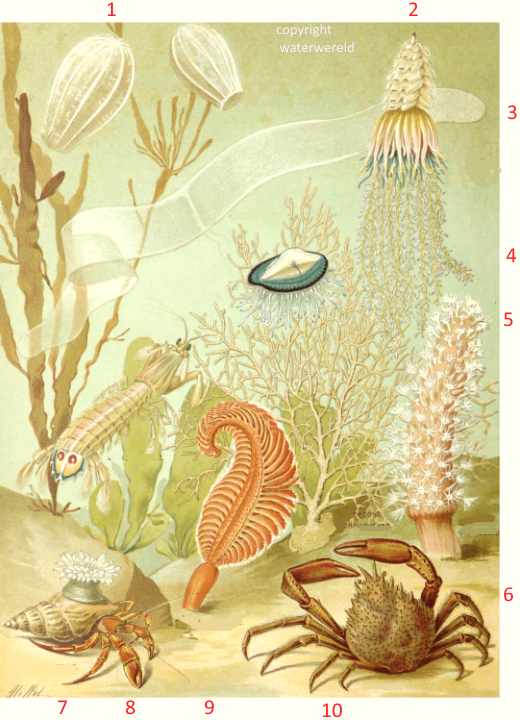Velella or by-the-wind sailor
Velella is a small free floating hydrozoan.,
Velella are about 5cm long and blue colored, carrying a small stiff sail
that catches the wind and propels them over the surface of the ocean.
It feeds on plankton, and forms large schools.
Velella is a
Although they are mostly called jellyfish, they are not:
Each apparent individual Velella velella is in fact
a small hydroid colony. That colony consists of many polyps
that feed on ocean plankton and are connected by a canal
system that enables the colony to share whatever plankton is
ingested by individual polyps.
Velella or by-the-wind sailor forms large schools and are deep blue colored.
Velella and the wind
As velella is propelled by the wind, they have liittle defence
against storms. They are thrown on the beaches of tropical islands,
and can form long lines of rotten animals. The eastcoast beeches
of the usa and the westcoast of Ireland can be spoiled by large
numbers of dead velella's after a storm.
Velella and the predators
Velella's is eaten by sea snails, like the violet snail Janthina janthina.
This snail is a marine gastropod mollusk that drift on the surface of the ocean,
waiting for its prey: mostly a man-of-war or by-the-wind sailor.
Another is the sea slug Glaucus atlanticus that also feeds on
the Portuguese man o' war.
Porpita porpita, commonly known as the blue button, (left) and many velellas (right), an illustration of Brehm.

Sea Life, by Lemercier et Cie., in 1898.
1 Beroe or Beroe cucumis
2 physophore nusonerne
3 venus girdle
4 by-the-wind-sailor or Velella
5 finger shaped sea pen or veretillum cynomorium
6 the European spider crab, spiny spider crab or Maja squinado
7 Hermit crab
8 mantis shrimp
9 Gorgone rose or Eunicella verrucose
10 red sea feather or pennatula rubra
